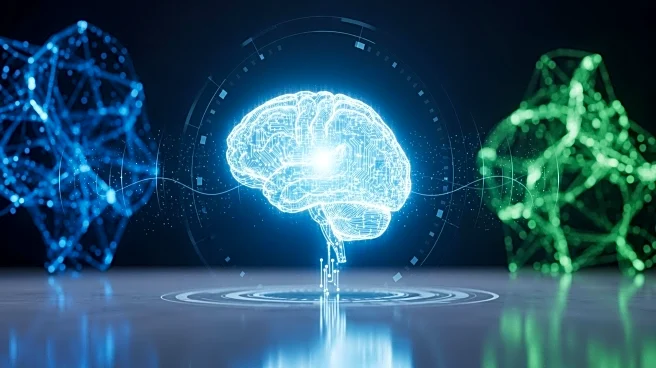What's Happening?
The AI industry is currently a major driver of economic growth in the United States, with data center construction and investment in information processing equipment and software accounting for over 90%
of economic growth in the first half of 2025. This surge is largely attributed to the increasing demand for AI infrastructure, which has led to significant investments in AI-related stocks and companies. However, there are growing concerns about the sustainability of this boom, with some experts warning of a potential 'AI bubble' due to unorthodox financial arrangements and speculative investments.
Why It's Important?
The AI boom is crucial for the U.S. economy, as it supports growth and innovation in technology sectors. However, the potential for an 'AI bubble' poses risks to investors and the broader economy. If the bubble bursts, it could lead to significant financial losses and impact economic stability. The situation also highlights the need for careful scrutiny of AI investments and financial practices to ensure sustainable growth. Stakeholders, including investors and policymakers, must weigh the benefits of AI-driven growth against the risks of speculative investments.
What's Next?
As the AI industry continues to expand, stakeholders will likely focus on monitoring financial practices and investment strategies to mitigate risks associated with a potential bubble. Policymakers may consider regulations to ensure transparency and stability in AI investments. Additionally, companies involved in AI infrastructure may need to adapt their strategies to maintain growth while addressing concerns about sustainability and financial practices.
Beyond the Headlines
The AI boom raises ethical and environmental concerns, particularly regarding the increased demand for electricity and its impact on net-zero timelines. The industry's growth also prompts discussions about the role of AI in society and the need for responsible innovation. Long-term, the AI boom could reshape industries and labor markets, necessitating new policies and educational programs to prepare the workforce for AI integration.











